| Price Per Person || Select By Date to 30-09-2025 |
| No. of person | 3 Star |
| For Twin Sharing | 86000 |
This Price Valid From 01-11-2024 To 30-09-2025
| No of Person | Economy |
This Price Valid From 01-01-1970 To 01-01-1970
| Hotel Details | |||||
| City Name | Economy | ||||
Cost Includes
- Hotel accommodation & Meal Plan as per details mentioned above
- Half Day Dubai City Tour
- Desert Safari with BBQ Dinner
- Burj Khalifa -124th Floor Entrance with Musical Fountain - Non Peak Hour Entry Ticket
- Return Dubai Airport Transfer
- UAE Tourist Visa
- Return economy class Air Ticket
- All Transfer and sightseeing on Seat in Coach basis ( Group Transfers ) unless specified otherwise
Cost Excludes
- Mandatory Dubai Tourism Dirham Fee to be paid directly to the hotel (subject to change basis local regulations)
- Tourism Dirham
- Travel Insurance (It is recommended to get the Travel Insurance done)
- Any kind of Transportation, Optional Sightseeing or Vehicle Services other than specified in Inclusions
- Any Airfare, Train Fare or Bus Ticket other than specified in Inclusions
- Extra meals other than mentioned above, Professional Guide Charges & Sightseeing Entrance Fees not included in Inclusions
- Any Expense of Personal Nature : Tips to Driver, Laundry, Telephone calls, Mini Bar etc
- Anything that is not mentioned in Cost Includes column
Important Points
- Pan Card copy of the Guest is mandatory at the time of Confirmation of Package
- No Cash Payments more than 1.99 Lakhs per person / per Group / per Package / per Booking can be taken as per New RBI Guidelines effective from 01st April 2017 onwards
- Tourism Dirham is mandatory to be paid at the hotel .
- How much is the Tourism Dirham amount : 3 Star Hotel 10 AED per room per night 4 Star Hotel 15 AED per room per night 5 Star Hotel 20 AED per room per night
- Check In time : Every Hotel in Dubai has a Check in time of 2:00 PM and Check out time of 12:00 Noon. In case of early arrival guest need to wait at the lobby until the front office agrees to provide early check in or late check out.
- Seat In Coach Timings : Please be on time for your tours and transfer. The coach will wait for no longer than 5 minutes than the specified time.
- Please ensure you meet the airport rep within 70 minutes of the flight landing. The driver has standing instructions to leave after this time has lapsed.
- Standard Check-In time in Dubai is 1400 hours. For a guaranteed early-check in, we recommend you book from India prior to your departure.
- Security Deposit - Hotels might charge you a security deposit/swipe your credit card for a particular amount. This amount will not be debited from your card and if in the form of cash, will be refunded to you (provided no damage has been done to the hotel premise/items in minibar are intact) .
- Security Deposit amounts to approx. 100 USD per room for the duration of stay
- Standard Check in timing is 1500 Hours and Standard Check out timing is 1200 Hours for all Major Hotels unless & until specified otherwise
- Rooms & Airfares will be subject to availability at the time of confirmation. Above is just a quote & no confirmation of Services
- ROE (Rate of Exchange) can change anytime without notice & hence the above rates also as we have based them as per todays ROE (Rate of Exchange)
- SIC (Seat in Coach) means it will be Group Transfers in 10 or 16 or 28 Seater Vans or Coaches and there can be a waiting time of 15 minutes to half an hours
- Private Transfers will do Point to Point Service and wont deviate from there schedule or itinerary at the time of Service Delivery
- Almost all Countries need Passports to be valid for minimum 6 months & few of them for minimum 9 Months from the date of entry into there Country. So please check expiry date of your Passports and its highly recomended that you get it renewed around 10 to 12 months before its expiry
- All Countries who Stamp Visa on Passport or give on Arrival Visa need at least 2 Blank Pages on Passport and few countries Back to Back Blank Pages to enable them to Stamp the Visa. Please check your Passports if you have available pages and if not then please get it renewed
- Handwritten and Passports issued for 20 years are no longer valid and such Passports have to be renewed immediately
- Any water spillage or Torn Pages or any Damage to external or internal parts of Passports will result in Passports not being accepted for Visa or during Immigration and hence its recomended that we renew the Passport
- Even after providing all the documents, Consulate may ask for additional documents as per there requirements & assessment
- Passports should have at least 2 to 4 Blank Pages & in few cases Back to Back Blank Pages for Visa Stampings or for On Arrival Visa
- There should not be any Heena (Mahendi) on Hands if you are going for Bio Metric (UK, Schengen or USA)
- Visa approval & rejection is not in our hands. We can just help you in arranging the documents & getting it deposited as per prescribed format. Consulate is the final authority to decide on Granting you the Visa
- All Countries take different time to Process Visa and hence it is recommended to check with us the time taken for Processing of Visa along with Documentation
1
Day 1 : Dubai
On Arrival, After Immigration Clearance proceed towards Parking area where our Airport Local Representative will take you to Dubai Hotel We reach Hotel. Standard check in of Hotel is 2 PM. We can request for an early check in but cannot guarantee it. We can keep our luggage in the Hotel Luggage Store and go and explore around the hotel. Afternoon after check in time free for rest & fresh up.
1500 -1530 Hours Pick up : Desert Dune Safari with Belly Dance & Dinner. Return back to the Hotel by 9 PM.
On this tour experience the thrill of a roller coaster ride on the sand dunes. We stop on the highest sand dune to view the beautiful sunset, a great chance to take amazing photographs - so don't forget your camera! We then continue our journey to the Bedouin Campsite located in the heart of the Desert, where soft drinks, water, tea or coffee are available for you to choose from. Once arrived there are many activities to choose from: enjoy a camel ride among the dunes, have a go at smoking a Shisha or Hubbly Bubbly (also known as narghile or water pipe), or try your hand at henna painting. While you relax in the comfortable pillow strewn tents, a delicious barbecue will be prepared for you, under the starlit sky.To make the evening a truly memorable event, a belly dancer will dance to the rhythm of Arabic music.
Overnight at Hotel
Meals: Dinner
2
Day 2 : Dubai (Dubai City Tour )
Our route takes you to some of Dubai's beautiful landmarks, including the most magnificent Jumeirah Mosque built in 1979 and designed in the style of Fatimi mosques in Egypt. See Jumeriah Public Beach and Burj Al Arab the most luxurious and tallest standing hotel in the world. We continue our journey and pass by Sheikh Mohamed's palace, then take a short break by the creek to view the amazing architecture of Deira Towers. We then visit the fascinating underground Dubai Museum housed in the Al Fahidi Fort, built in 1800 from sea rocks and gypsum to defend the city. We continue through the colourful textile market, and stop at the gold souq where you will be amazed at the sheer volume of dazzling gold jewellery.
Overnight at Hotel
Meals: Breakfast
3
Day 3 : Dubai (Atlantis Palm & Aquaventure Lost Chamber)
1000 -1030 Hours Pick Up: Full Day Trip to Atlantis (5 Star Deluxe Hotel on the Famous Palm Dubai) to enjoy Aquaventure & Lost Chambers.
This is one of the must do attractions in Dubai for Children. Enjoy the thrill of jumping into the No. 1 water park in the Middle East and Europe, over flowing with 17 fun-filled hectares for all ages. Experience adrenaline pumping waterslides that catapult you through shark filled lagoons, scream through the planet's largest slide or race down the world's first dual slide within a slide. Fly high on the longest zip line circuit in the Middle East. Or just relax on our private beach surrounded by lush tropicanl landscapes. Plus younger children will love Splashers a play area designed just for them. Spectacular rides and thrilling slides make Aquaventure Waterpark the most exciting day out in Dubai.
Overnight at Hotel
Meals: Breakfast
4
Day 4 : Dubai ( Bhuj Khalifa )
Get ready to enter the record books and experience a journey through Dubai's exotic Arabian heritage, the extraordinary story behind Burj Khalifa as the new icon for the Middle East, and view the spectacular panorama from the observatory At the Top, Burj Khalifa. Explore the unique, interactive Burj Khalifa multi-media exhibits. Be thrilled by a high speed journey in one of the world's fastest elevators. Take a closer look at the world below through avant-garde, high powered, telescopes. Step out onto the world's highest public outdoor observation terrace overlooking the ever growing skyline of Sheikh Zayed Road and surrounding panorama. Integrate reality and special effects with At the Top Green Screen Photography. Browse exclusive Souvenirs from the At the Top Retail Boutique
5
Day 5 : Dubai ( Abu Dhabi City Tour )
0900 - 0930 Hours Pick Up Abu Dhabi city tour with Lunch followed by Ferrari Park Abu Dhabi City Tour
The tour starts from Dubai, travelling past the man-made port at Jebel Ali and onward for a two hour drive through desert scenery, studded with acacia trees. The first stop will either be at a Handi Craft Centre or Heritage Village. A short drive takes you to Al Husn Palace (outside view only). Built in 1793 to establish political order, the palace belongs to the grandfather of Sheikh Zayed, former President of the UAE. Abu Dhabi is the capital of the UAE, occupying 87% of its total land. Many of its striking examples of modern architecture show intriguing interpretations of Islamic themes captured in today's materials. Shimmering skyscrapers, villas and palaces line our route along the Riviera-style corniche with its blue Gulf waters and offshore islands. Enjoy the chance to shop or lunch in the mall at the marina, before heading back to Dubai.
Ferrari Park
Ferrari World Abu Dhabi is the world's first Ferrari theme park and largest attraction of its kind. The Park offers more than 20 Ferrari-inspired rides and attractions, including a diverse array of rides for all ages and interests. Visitors will enter a stunning world where the Ferrari passion, excellence, performance and technical innovation come vibrantly to life. Along with rides, the visitors can also browse and shop from the several retail outlets that are located throughout the park including the largest Ferrari Store in the world and a Ferrari boutique that specializes in creating personalized souvenirs for Ferrari lovers. The park provides you a true Italian dining experience to complete fun filled visit to the park.
Overnight at Hotel
Meals: Breakfast & Lunch
6
Day 6 : After Enjoying Breakfast at the Hotel you can enjoy Morning Limousine Ride or Butterfly Garden
Morning after breakfast day is free at your leisure for optional sightseeing & shopping.
Overnight at Hotel
Meals: Breakfast
7
Day 7 : Departure from Dubai
Morning after breakfast check out from the hotel at around 11 AM. We can keep our Luggage in the Luggage Room and keep this day free for final shopping & other optional activities. We can either do our street shopping in Meena Bazar which is adjecent to our Hotel or from Dubai Mall, which is the biggest Mall in UAE. Alternatively we can also go to Mall of Emirates (High End Branded Stores) & Snow World (Artificial Snow Fall and Winter Sports activities). In the evening we leave for Dubai Airport to board our return flight with all the Happy memories of the Tour.

Desert Safari
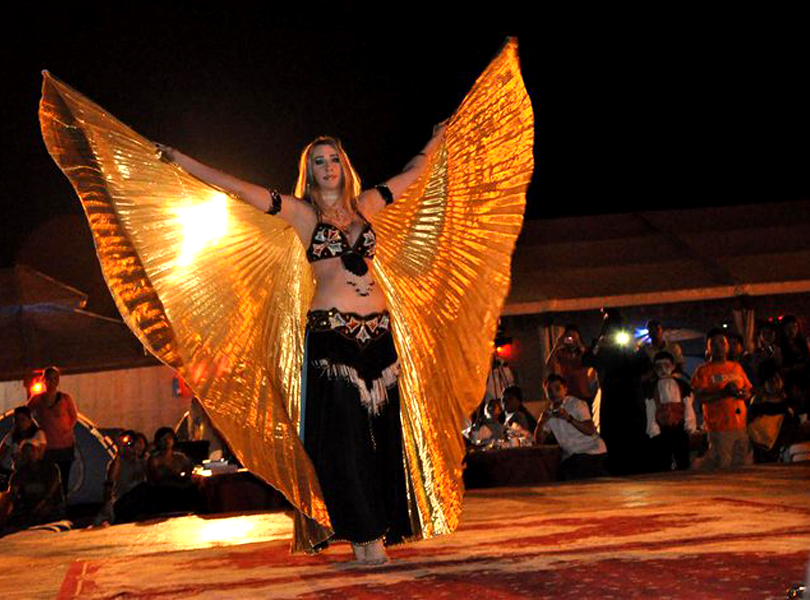
Belly Dance
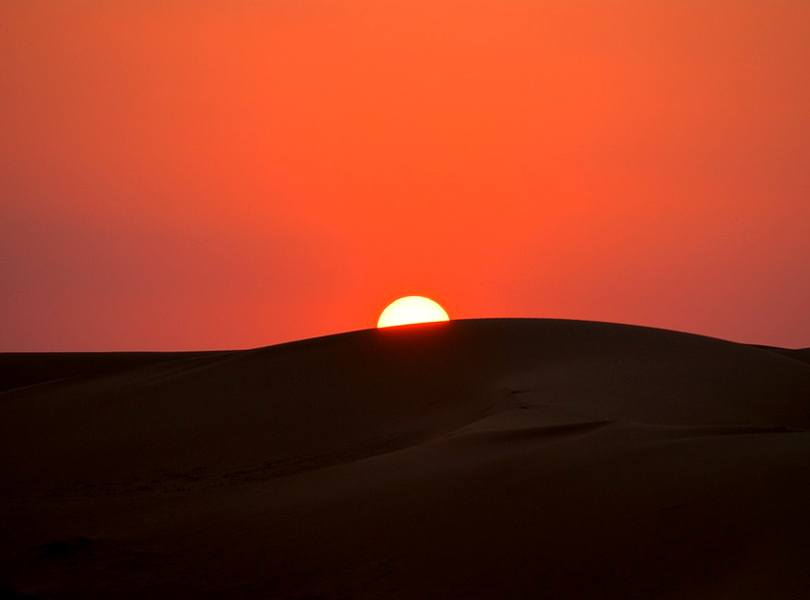
Sunset

Camel Ride

Burj Al Arab

Jumeriah Beach

Dhow Cruise
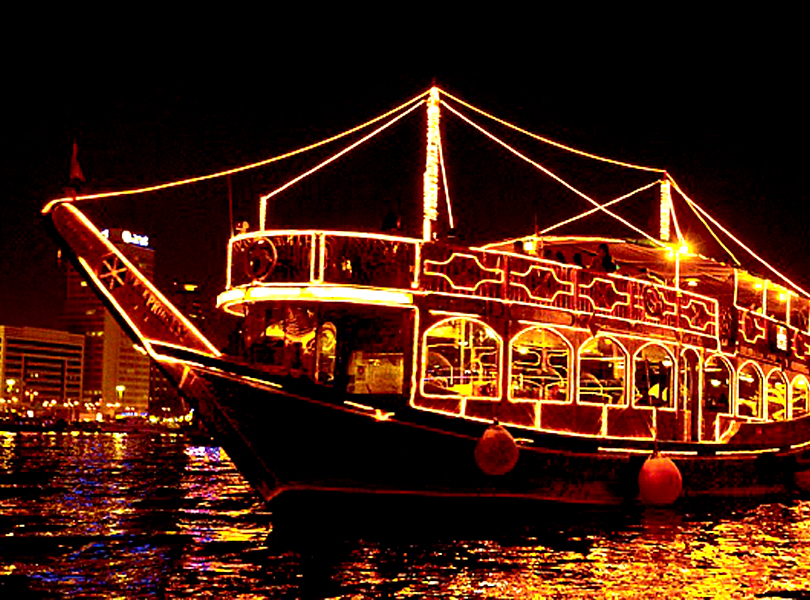
Dhow Cruise

Atlantis Palm

The Lost Chamber

Yacht Boat Cruise

Water Park
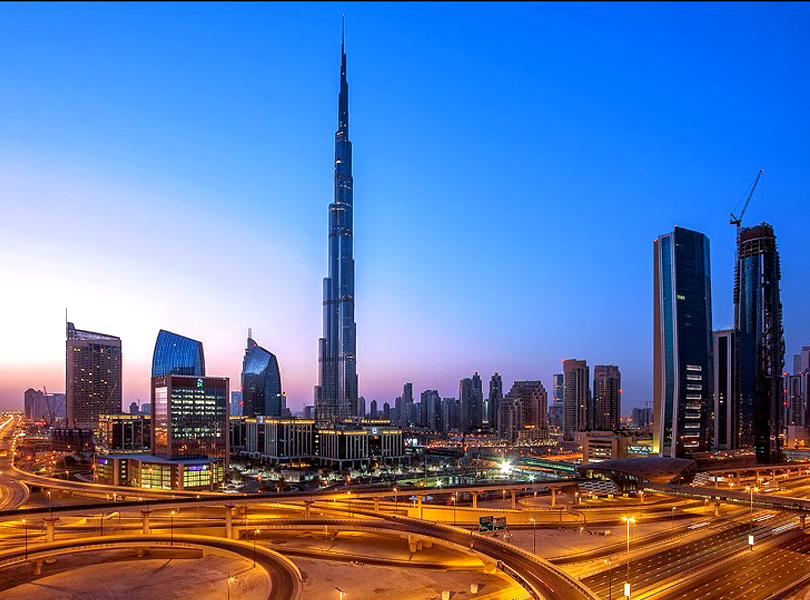
Burj Khalifa

Musical Fountain

Ice Rink

Underwater Zoo

Sheikh Zayed Mosque

Abu Dhabi City

Abu Dhabi Corniche

Ferrari World

Limousine Ride

Butterfly Garden

Miracle Garden

Snow World

Dubai-Mall

Gold-Souk

Mall Of Emirates

Airport
Ultimate Dubai
| Package Code: NHI004 |
| 6 Nights / 7 Days |
| Holiday Type International Holidays, Leisure, Luxury Dubai, Romantic, Adventure, Family |
| Cities : Dubai, Day Trips to Abu Dhabi & Atlantis |
Send Friend
Enquire Now
JANUARY
Whats the Weather like in Dubai in January
The United Arab Emirates consists of seven emirates, with Dubai being the most densely populated and the most modern. Situated on the Persian Gulf Coast, this home of the 8th most visited city in the world enjoys a hot and dry desert climate year round.
Temperature
January is Dubais coldest month, but is actually more in keeping with a British summer than the winter, with temperatures averaging out at about 19°C to 20°C, compared to February, which has an average temperature of around 20°C. The cold temperatures, at least by Dubai standards, mean that humidity is almost non-existent.
Even though January is considered to be one of the coldest months it is characterized by daily high temperatures around 24°C throughout the month and the possibility of exceeding 28°C. However, daily low temperatures are around 15°C and can fall below 12°C on a particularly cold day.
If you were to compare these temperatures to August they are considerably lower. During the height of the summer season, temperatures can soar to a blistering 41°C, which many British tourists may find uncomfortable, therefore most people tend to visit during the winter season.
Average Sunshine Hours
During January the average sunshine hours are around eight hours, which is the same as December and February. The shortest day of the month is on January 1st with 10:36 hours of daylight, whilst the longest day is January 31st with 10:60 hours of daylight.
Rainfall
At this time of year the skies are mostly clear, where median cloud cover is only 25% likely. Precipitation is also very low as expected at only 14%. Only 10mm of rainfall is expected to fall throughout the month, spread over just six days, compared to London in the UK which is likely to see at least 52mm of rainfall spread across 19 days. The driest months in Dubai are usually July to September where rainfall is extremely unlikely.
Humidity
The typical humidity at this time of year ranges from a comfortable 43% to a very humid 91%. The air is usually driest around January 31st, when humidity levels are predicted to drop below 51%, whilst the most humid day is around January 1st where humidity levels can rise above 82%. January is actually one of the most comfortable months of the year as dew points are neither too dry nor too muggy.
Wind
Wind speeds are very low in January, typically varying from 1 m/s to 6m/s, which is considered as a light to moderate breeze. The highest average wind speed usually occurs around January 31st where wind speed levels can reach 4 m/s. On the other hand the lowest average wind speed of 3 m/s occurs around January 1st. The wind at this time of year is most often coming from the south.
Average Sea Temperature
Overall, January is one of the best months of the year to visit Dubai as its warm enough to go sunbathing, swimming and sightseeing. The sea temperature at this time of year is also positively warm at 21°C, however it is considerably cooler compared to August where sea temperatures can soar above 32°C!
FEBRUARY
Whats the Weather like in Dubai in February
The second largest and most densely populated of the United Arab Emirates is Dubai. Its also one of the most multicultural areas, with many Indian, Pakistani, Filipino, American and European residents. Dubai enjoys a hot desert climate and provides white sandy beaches coupled with modern and unique sightseeing opportunities.
Temperature
Dubai has a hot desert climate, with an average temperature of 20°C, the month of February is characterized by gradually rising daily high temperatures, where it is very possible that temperatures can exceed the 30°C mark. However, it is possible for temperatures to fall below 12°C on rare occasions, compared to March, which has an average temperature of around 23°C.
If you want to visit Dubai when its slightly cooler, January may be a better option when temperatures average out at 19°C to 20°C.
Average Sunshine Hours
During February the amount of sunshine hours stay the same as December and January at eight hours in total. However, the length of day is starting to gradually increase. The longest day of the month is February 29th with 11:37 hours of daylight, whilst the shortest day of the month in February 2nd with 11:01 hours of daylight.
Clouds
The skies are usually very clear in February, when median cloud cover is at a mostly clear 25%, which does not vary substantially over the course of the month. February 15th is predicted to be the clearest day of the month, when the sky is clear or mostly clear 57% of the time.
Rainfall
The average probability that some form of precipitation will form in Dubai during February is only 16% likely, with little variation over the course of the month. On average 40mm of rainfall is likely to fall spread over just four days, compared to January when 10mm of rainfall is predicted, spread over just six days. The most likely form of precipitation at this time of year is moderate rain; its most likely to fall around February 27th.
Humidity
In February humidity levels are relatively comfortable in Dubai. The relative humidity typically ranges from a comfortable 40% to a very humid 92% over the course of a typical February, rarely dropping below a dry 21%. The air is usually driest around February 29th, at which time the relative humidity drops below a mildly humid 50% three days out of four.
The most humid time is predicted to be around February 28th, where humidity levels can rise above a very humid 86% three days out of four.
Over the course of February, the dew point varies from a dry 8°C to a comfortable 16°C, rarely dropping below 3°C or exceeding 19°C. The time of the month between February 1st and February 29th is one of the most comfortable times of the year, with dew points neither too dry nor too muggy.
Wind
Typical wind speeds in February vary from 1 m/s to 6 m/s, which is considered as a light to moderate breeze, rarely ever exceeding 9 m/s. The highest average wind speed is likely to occur around February 22nd at 4 m/s, at which time the average daily maximum wind speed is a moderate 6 m/s.
On February 26th 2012, strong sandstorms raged across the UAE, closing off roads in Dubai and even causing flight delays in some UAE airports. Sandstorms occasionally occur in Dubai as it is located in the middle of the desert. They are usually caused by strong north-westerly winds blowing over from Saudi Arabia which pick up sand along the way, usually they are not harmful but can last up to several days and reduce visibility.
Average Sea Temperature
If you fancy going for a dip the sea temperature in February is pleasantly warm at 21°C, however this is significantly colder compared to August where sea temperatures can exceed 33°C!
February is a superb time of year to visit Dubai, as even though the temperatures are getting warmer, its a lot more comfortable than visiting in the peak of the summer where temperatures can reach the mid 40s.
MARCH
Whats the Weather like in Dubai in March
The second largest, and most densely populated of the United Arab Emirates is Dubai. Its also one of the most multicultural areas, with many Indian, Pakistani, Filipino, American and European residents. Dubai enjoys a hot desert climate and provides white sandy beaches coupled with modern and unique sightseeing opportunities.
Temperature
March brings temperatures ranging from 17°C-28°C in Dubai, compared to April, which has an average temperature of around 26°C. With only a half inch of rain expected during the entire month, UV is high so sunscreen is advisable and the humidity increases slightly from previous months, but shouldnt cause too much, if any, discomfort.
As expected Dubai experiences a dry hot desert climate. The month of March is characterized by rising daily high temperatures with daily high temperatures increasing from 26°C to 30°C, compared to the summer season this is considerable cooler and more comfortable as in August temperatures can exceed 41°C. However, on some occasions in March temperatures can even exceed a sweltering 36°C.
Average Sunshine Hours
During March, as spring is under way the sunshine hours are starting to increase to nine hours, up an hour from the months of January and February. Over the course of March, the length of day is gradually increasing. The longest day falls on March 31st with 12:24 hours of daylight, whilst the shortest day of the month is March 1st with 11:40 hours of daylight.
Clouds
During March the median cloud cover ranges from a mostly clear 19% to 25%. Even though cloud cover over the course of the year is very low, the trend in March is for the sky to be clearing with the median cloud cover decreasing by 6% from the start to the end of the month.
Rainfall
Precipitation at this time of year is very low, with the average probability that some form of precipitation will be observed in a given day at just 15%, with very little variation over the course of the month. On average only 10mm of rainfall is expected throughout the month, spread across just six days.
February is usually the month that experiences the most rainfall, however this is still low at 40mm, spread over just four days. If it does in fact rain, the most common forms of precipitation are moderate rain, thunderstorms and light rain.
Humidity
During March the relative humidity ranges from a comfortable 33% to a very humid 92%, rarely dropping below a very dry 14%. The air is usually driest around March 31st, at which time the relative humidity drops below 44% three days out of four. The most humid day is likely to fall around March 1st, where humidity levels may rise above 76% three days out of four.
Furthermore, over the course of a typical March the dew point ranges from a dry 9°C to a mildly humid 18°C, rarely dropping below 2°C or exceeding 21°C. This means that between March 1st and March 31st the air is relatively comfortable with dew points that are neither too dry nor too muggy.
WOver the course of a typical March wind speeds vary from 1 m/s to 7 m/s, which is considered as a light to moderate breeze. The highest average wind speed of 4 m/s usually occurs around March 21st, at which time the average daily maximum wind speed is 7 m/s.
The lowest average wind speed of 4 m/s occurs around March 1st, when the average daily maximum wind speed is 6 m/s. At this time of year the wind is most often coming from a southern direction.
Average Sea Temperature
The sea temperature in March is pleasantly warm at 22°C, which is warm enough to go for a swim. During the summer months sea temperatures can get quite hot, for example in August the water temperature can increase to a hot 33°C.
APRIL
Whats the Weather like in Dubai in April
Dubai, one of seven emirates of the United Arab Emirates, is a popular holiday destination. Dubai boasts some of the worlds tallest and most intricately designed buildings, housed amongst traditional Islamic architecture and Arabic history.
Temperature
Although Dubai is hot year round, April is when temperatures really start to spike. They rise to between 19°C and 32°C, with an average of 26°C, compared to May, which has an average temperature of around 31°C.
The humidity increases meaning some visitors may begin to feel a little uncomfortable in the conditions and the UV levels rocket so its important to take care in the sun. Rainfall is a low 0.3 inches.
The highest temperature which has been recorded in April in recent years was 40°C, it is also unlikely for temperatures to drop below 20°C. April is mainly characterized by rising daily high temperatures and if you were to travel to Dubai in the summer months it is likely you would experience daily average temperatures in the high 30s.
Average Sunshine Hours
The sunshine hours in April are gradually starting to increase to 10 hours, compared to nine hours in March. Overall, the length of day is increasing too, the longest day falls on April 30th, with 13:05 hours of daylight, whilst the shortest day of the month is April 1st with 12:25 hours of daylight.
Clouds
During April the median cloud cover ranges from a clear 6% to a mostly clear 18%. April 30th is usually the clearest day of the month, when the sky is predicted to be clear, mostly clear or partly cloudy 74% of the time. April 1st is usually the cloudiest day of the month, where the sky is predicted to be overcast, mostly cloudy or partly cloudy 22% of the time.
Weather Warnings
On April 18th in 2008 a severe sandstorm hit Dubai causing reduced visibility up to 1,500 metres. Motorists across the region faced hazardous driving conditions, however flights in and out of the UAE were not disrupted. Sandstorms in Dubai are usually caused by strong north-westerly winds blowing from Saudi Arabia.
Rainfall
Precipitation at this time of year in Dubai is highly unlikely. On average April only sees 10mm of rainfall over just two days, compared to December which is slightly higher at 20mm over four days. The probability that precipitation will be observed in Dubai varies throughout the month.
Rain is most likely on April 1st, when it is 13% likely, whilst precipitation is least likely around April 30th at 5%. Throughout the month, the most common forms of precipitation are moderate rain, thunderstorms and light rain.
Humidity
Humidity levels are gradually starting to decrease in April, the typical humidity levels range from a dry 26% to a very humid 89%. Over the course of a typical April humidity levels rarely drop below 12%. The air is usually driest around April 30th, at which time the relative humidity drops below a comfortable 35% three days of out of four, on the other hand the most humid day is around April 1st, where humidity levels can rise above an uncomfortable 81%.
Wind
Throughout April typical wind speeds vary from 1m/s to 7 m/s, considered as a light to moderate breeze, rarely exceeding 10 m/s. The highest average wind speed of 4 m/s occurs around April 3rd, at which time the average maximum wind speed is 7 m/s. At this time of year wind is most often coming from a southern direction 16% of the time.
MAY
Whats the Weather like in Dubai in May
Situated on the Persian Gulf Coast, Dubai is a resort destination within the United Arab Emirates with white sandy beaches to the east and the Hajar Mountains to the West, with vast amounts of urban sprawl and desert in between. The area is hot and dry year round.
Temperature
May is the start of the summer in Dubai and sees temperatures, highs that many native Brits are not accustomed to ranging from 23°C-36°C, with an average of 31°C, compared to June, which has an average temperature of around 33°C.
Being a desert region, rainfall during May is very rare so its a great time for being outdoors, though beware of the high humidity levels, which may be uncomfortable for some.
May is characterized by rising daily high temperatures, with temperatures increasing from 35°C to 38°C and even exceeding to 42°C! On the other hand daily low temperatures range from 24°C to 27°C and can occasionally fall below 21°C.
Average Sunshine Hours
During May the sunshine hours are starting to increase up to 11 hours on average. However, the daylight hours stay relatively constant throughout the month. The shortest day in May is May 1st with 13:07 hours of daylight, whilst the longest day is May 31st with 13:36 hours of daylight in total.
Clouds
At this time of year the median cloud cover ranges from a clear 1% to 6%. During this month it is very rare to see any clouds at all! The trend in May is for the sky to be clearing with the median cloud cover decreasing by 5% from the start to the end of the month.
Rainfall
Precipitation in Dubai is very rare; in May the average probability of rainfall on any given day is only 3%, with little variation over the course of the month. In total only 10mm of rainfall is expected, compared to February where on average 40mm of rainfall is expected to fall over just four days. If it were to rain, the most common forms of precipitation at this time of year are moderate rain, thunderstorms and light rain, however this is very unlikely.
Humidity
During May the relative humidity ranges from a dry 26% to a very humid 89% over the course of the month, rarely dropping below a very dry 11% or exceeding a very humid 100%. May is actually one of the least humid months where humidity levels usually stay around 50%, compared to January and December where humidity levels can exceed 65% on a daily basis.
The dew point is often a better way to measure how comfortable you will find the weather. In May the dew point generally ranges from a dry 10°C to a muggy 24°C.
Wind
The wind speeds in May typically vary from 1 m/s to 7 m/s, which is considered as a light to moderate breeze, rarely exceeding 9 m/s. The highest average wind speed of 4 m/s usually occurs around May 20th, at which time the average daily maximum wind speed is a moderate 7 m/s. At this time of year the wind is most often coming from the south.
Average Sea Temperature
The sea temperature is also picking up in May at 28°C, compared to April, where the average sea temperature stays around 25°C. This makes it perfect for water sports such as windsurfing and kite surfing.
JUNE
Whats the Weather like in Dubai in June
Dubai, one of the seven United Arab Emirates, is a popular holiday destination for travellers from all over the world. Just a 7 hour flight from the UK, thousands of Brits each year descend on the Arabian desert resort to take advantage of the hot and dry desert climate.
Temperature
June in Dubai is, without a doubt, hot. Temperatures reach about 38°C in the hottest part of the day, with overnight temperatures rarely dropping below 26°C, with an average of 33°C, compared to July, which has an average temperature of around 35°C.
The desert location means theres very little rainfall, and visitors during June are unlikely to see any at all. However, the humidity reaches extreme levels in June so travellers may become damp and uncomfortable in the heat.
The month of June is characterized by constant daily high temperatures with the possibility of temperatures exceeding 43°C! However, on very rare occasions temperatures can drop below 24°C, but still expect to see temperatures reach around 39°C.
The warm season in Dubai lasts from May 18th until September 25th, with average daily temperatures of 37°C. The hottest months of the year are usually July and August where daily high temperatures can reach over 40°C.
Average Sunshine Hours
Over the course of June the length of day stays relatively constant. The shortest day of the month, as expected is June 1st with an average of 13:36 hours of daylight, while the longest day is June 24th with 13:43 hours of daylight. However, the amount of sunshine hours has slightly increased from 10 hours in May to 11 hours in June.
Cloud
During June the median cloud cover is extremely low at 1% and does not vary over the course of the month. As an example, on June 15th, the sky is clear or mostly clear 74% of the time and partly cloudy only 4% of the time.
Rainfall
Precipitation is extremely rare in June. February is usually the month most likely to experience rain with an average of 40mm of rainfall, spread over four days.
Humidity
Humidity levels in June typically range from a dry 27% to a very humid 89% over the course of the month, rarely dropping below a very dry 13%. The air is predicted to be driest around June 1st, when the relative humidity drops below a comfortable 35% three days out of four, whilst the most humid is expected to be around June 4th, where humidity levels could rise above a humid 78%.
Furthermore, over the course of a typical June, the dew point varies from a comfortable 13°C to an oppressive 26°C and rarely drops below 6°C or above 29°C.
Wind
Throughout June the average wind speeds range from 1 m/s to 7 m/s, which is considered as a light to moderate breeze, rarely exceeding a fresh breeze of 9 m/s. In Dubai the wind is most often coming from the south (16% of the time), or the west (15% of the time).
Average Sea Temperature
Sea temperatures are also increasing in June from 28°C in May to 31°C in June! Making it the perfect temperature for water sports or swimming. However, as it gets extremely hot at this time of year make sure to put on plenty of sun cream and keep hydrated.
JULY
Whats the weather like in Dubai in July
The United Arab Emirates are often known as being very traditional, but Dubais modern outlook in terms of culture and architecture is what makes it stands out as a top holiday destination. Controlled by the UK until 1971, there are many noticeable western influences in this Arabic desert region.
Although Dubai is hot all year round, July is one of the two hottest months of the year, with temperatures reaching a whopping 40 degrees Celsius. Overnight, temperatures remain high at around 29 degrees. Theres practically no rainfall during the summer months, although the humidity is through the roof.
Temperature
The warm season in Dubai lasts from May 18th to September 25th with an average daily high temperature above 37°C. The hottest day of the year is July 28th, with an average high of 41°C and low of 31°C, with an average temperature of 35°C, compared to August, which has an average of around 36°C.
The highest recorded temperature in recent years was a blistering 49°C, whilst the lowest was 20.4°C.
Average Sunshine Hours
During July, the length of day is essentially constant. The shortest day of the month is July 31st with 13:19 hours of daylight, while the longest day of the month is July 1st with 13:41 hours of daylight. However, at this time of year the amount of sunshine hours are starting to gradually decrease to 11 hours per day – thats one hour less compared to June which receives on average 12 hours of sunshine per day.
Clouds
There are hardly any clouds during July as the median cloud cover is only 4% and does not vary substantially over the course of the month. As an example, July 16th; the sky is clear or mostly clear 73% of the time and partly cloudy only 6% of the time.
Rainfall
Precipitation is extremely low in July as the average probability that some form of rainfall will be observed on any given day is only 1%, with little variation throughout the month. The month most likely to experience any form of precipitation is February, where on average 40mm of rainfall is likely.
Humidity
During July the typical humidity ranges from a dry 30% to a very humid 89%, rarely dropping below a very dry 15%. The air is usually driest around July 28th, at which time the relative humidity drops below 38% three days out of four. Whilst it is predicted to be most humid around July 3rd, where humidity levels can rise above 78%, three days out of four.
Furthermore, over the course of a typical July in Dubai the dew point ranges from a comfortable 16°C to a very oppressive 27°C and rarely falls below a dry 8°C or above 30°C.
Wind
Throughout July the typical wind speeds vary from a light 1 m/s to a moderate breeze of 7 m/s, rarely exceeding 9 m/s. The highest average wind speed of 4 m/s occurs around July 1st, at which time the average daily maximum wind speed is 7 m/s. At this time of year the wind is most often coming from a southern direction.
Average Sea Temperature
At this time of year the sea temperature is usually around 32°C, compared to January when the sea temperature is at its lowest at 21°C. This makes July a perfect time of year to go swimming or take part in a number of water sports such as kite surfing or windsurfing.
AUGUST
Whats the Weather like in Dubai in August
Dubai, located in the Arabian Desert on the Persian Gulf Coast, experiences year round warm and dry weather, with the summer months being particularly hot and windy. This desert climate, as well as the stunning beaches and blue seas, is a major selling point for the emirate.
August is one of the two hottest months in Dubai, and temperatures above 40 degrees Celsius are considered normal. Visitors at this time of year are unlikely to see temperatures dip much below the 30 degree mark. There is practically no rainfall during August, and the humidity and UV levels are extreme.
Temperature
In Dubai the warm season lasts from May 18th up until September 25th, with an average daily high temperature above 37°C.
August is characterized by gradually falling daily high temperatures, with an average temperature of 36°C, compared to September, which has an average temperature of around 33°C.
August has daily highs around 40°C throughout the month, on occasions exceeding 44°C and dropping below 37°C, only one day in ten! The highest temperature recorded in recent years in August was a blistering 48.7°C, while the coolest was 23.1°C, which is still nothing to complain about.
As the summer is gradually coming to a close, the length of day is slowly decreasing. The shortest day of the month is August 31st with 12:39 hours of daylight, whilst the longest day is predicted to be August 1st with 13:18 hours of daylight.
Clouds
Cloud cover at this time of year is extremely low. On average the median cloud cover is a clear 4% and does not vary substantially over the month. An example day would be August 16th, where the sky is clear or mostly clear 74% of the time and only partly cloudy 5% of the time.
Rainfall
Throughout the year precipitation is very low in Dubai, however in August it is exceptionally rare. The average probability that some form of precipitation will be observed on any given day throughout the month is only 1%! The wettest month of year is actually February, with an average of 40mm of rainfall throughout the month.
Humidity
Humidity at this time of year is rather high ranging from a comfortable 30% to a very humid 89% over the course of a typical August, and rarely dropping below 15% or as high as 100%.
On average, the air is driest around August 9th, at which time the relative humidity drops below a comfortable 38% three days out of four, while it is predicted to be most humid around August 31st, where humidity levels can rise above 76% three days out of four.
On average the most humid months are December, January and February where humidity levels in Dubai can reach 65%. Whilst the least humid month is predicted to be May where humidity levels hover around a comfortable 50%.
Furthermore, the dew point is often a better way to measure how comfortable you will find the weather as it relates to whether perspiration will evaporate from the skin. Over the course of August, the dew point varies from a mildly humid 17°C to a very oppressive 27°C.
Wind
Wind levels at this time of year are very low. Over the course of August the average wind speeds vary from 1 m/s to 7 m/s, which is considered as a light to moderate breeze, hardly ever exceeding 9 m/s.
Average Sea Temperature
August sees the highest water temperatures of the year at a warm 33°C on average, so this is the perfect month to hit the beach and have a dip in the sea
SEPTEMBER
Whats the Weather like in Dubai in September
The hot and dry desert climate of Dubai is one of the top reasons why this Middle Eastern resort is one of the most popular holiday destinations with travelers. In fact, Dubai City is regarded as the 8th most visited city, and Dubai International Airport the 6th busiest airport in the world. But Dubai has much more than just sun, sea and surf.
Temperature
Temperatures begin to drop in September, marking the end of the summer, but with highs of 38°C and lows of 26°C, Dubai is still a hotspot - literally. Like the summer months, there is practically no rainfall and the humidity finally begins to subside, visitors shouldnt find themselves too damp or uncomfortable.
The average temperature during September is still very hot at 33°C – 4°C higher than October. The warm season in Dubai typically lasts from May 18th until September 25th, with an average daily high of 37°C and an average low of 31°C.
The highest temperature recorded in September in recent years was a blistering 45.1°C, while the lowest was only 16.5°C.
Average Sunshine Hours
Over the course of September the length of day is gradually decreasing. The shortest day of the month is September 30th with a total of 11:56 hours of daylight, whilst the longest day of the month is September 1st with 12:38 hours of daylight. The amount of sunshine hours are slowly decreasing too, but they are still the same compared to August at 10 hours.
Clouds
The cloud cover in Dubai is generally low throughout the year. During September the median cloud cover is a clear 1% and does not vary substantially over the course of the month. As an example, on September 15th, the sky is clear or mostly clear 77% of the time and only partly cloudy 3% of the time. So you are pretty much guaranteed clear skies and very hot weather if you choose to stay in Dubai during September.
Rainfall
Precipitation at this time of year is also very rare. The wettest month of the year is usually February, which receives on average 40mm of rainfall throughout the month.
Humidity
The humidity in September usually ranges from a comfortable 31% to a very humid 91% over the course of the month, rarely dropping below a dry 16% or reaching a very humid 100%.
The air is typically driest around September 12th, at which time the relative humidity drops below a comfortable 39% three days out of four. The humidity levels are predicted to be highest around September 30th, rising above a humid 82%, three days out of four.
Over the course of September, the dew point generally varies from a comfortable 15°C to a very oppressive 27°C, and rarely falls below 8°C or above 29°C.
Wind
September experiences typical wind speeds varying from just 1 m/s to 7 m/s, which is considered as a light to moderate breeze, rarely ever exceeding 8 m/s. The highest average wind speed of 4 m/s is expected to occur around September 1st, at which time the average daily maximum wind speed is a moderate 7 m/s.
On the other hand, the lowest average wind speed of 3 m/s occurs around September 30th, at which time the average daily maximum wind speed is 7 m/s. At this time of year in Dubai the wind is most often coming from the south 16% of the time and the west 15% of the time.
Average Sea Temperature
Sea temperatures at this time of year are also gradually starting to decrease from 33°C in August to 32°C in September. However, the temperature is still perfect for swimming and water sports such as windsurfing!
OCTOBER
Whats the Weather like in Dubai in October
Situated between white sandy beaches and the tall Hajar Mountains, the emirate of Dubai is a holiday hotspot for travellers from around the world. Although the Middle East is not often known for its tourism, the previous UK control and modern advancements have made Dubai more similar to western countries than other areas of the United Arab Emirates.
Temperature
With its hot and dry desert climate, its never cold in Dubai, even approaching the winter months. October tends to be very warm and dry, with practically no precipitation and temperatures ranging from 22°C to 35°C, with an average of 29°C, compared to November, which has an average temperature of around 25°C.
The overall average temperature in October is a hot 29°C, so theres nothing really to complain about. On the other hand, the hottest month of the year is usually July, where the average temperature is 35°C!
The month of October is characterized by falling daily high temperatures, with daily highs decreasing from 37°C to 33°C over the course of the month, exceeding 39°C or dropping below 31°C only one day in ten.
The lowest temperatures at this time of year range from 23°C to 26°C, falling below 20°C or exceeding 28°C only one day in ten. In recent years the highest temperature recorded in October was a blistering 42°C, whilst the coldest temperature recorded was 15°C.
Average Sunshine Hours
The amount of sunshine hours stay around 10 hours, similar to August and September. However, over the course of October, the length of day is gradually decreasing. The shortest day of the month is October 31st with 11:12 hours of daylight, while the longest day of the month is October 1st with 11:54 hours of daylight.
Clouds
The cloud cover throughout the year in Dubai is low. During October it is no different, the median cloud cover is a clear 3% and does not vary substantially over the course of the month. On October 16th, the sky is clear or mostly clear at least 76% of the time and only partly cloudy 4% of the time.
Rainfall
Precipitation at this time of year is extremely low. The average probability that some form of precipitation will be observed in any given day is only 2%, with little variation over the month. The wettest month of the year on average is February, which can receive up to 40mm of rainfall.
Humidity
Humidity levels in October typically range from a comfortable 32% to a very humid 91%, rarely dropping below a dry 16% or reaching a very humid 100%. The air is usually driest around October 4th, at which time the relative humidity drops below a comfortable 41% three days out of four. On the other hand it is most humid around October 8th, where humidity levels can rise above 83% three days out of four!
Wind
Over the course of October the wind speeds vary from 1 m/s to 7 m/s, which is considered as a light to moderate breeze, rarely exceeding 8 m/s. The highest average wind speed of 3 m/s usually occurs around October 1st, at which time the average daily maximum wind speed is a moderate 7 m/s. In Dubai the wind is most often coming from the south (16% of the time), or the west (15% of the time).
Average Sea Temperature
Even though winter is on the way the sea temperature is still very hot in October at 30°C, compared to January where sea temperature levels are at a warm 21°C.
NOVEMBER
Whats the Weather like in Dubai in November
Dubai is one of seven emirates of the United Arab Emirates, it is the most densely populated and most modern, making it a more popular holiday spot than many other places in the Middle East. While Arabic customs must be respected, Dubai is tolerable of other religions and non-muslim visitors are always welcome.
Temperature
Dubai is hot, dry and windy year round, but the cooler November temperatures of around 18°C to 31°C, with an average of 25°C, mean theres very little humidity. Compared to December, which has an average temperature of around 21°C.
Theres also very little rainfall, just 0.2 inches expected over the entire month. Weather-wise, November is considered one of the best times to visit Dubai.
November is characterized by rapidly falling daily high temperatures, however its nothing to worry about, as daily highs decrease from a hot 33°C to 28°C over the course of the month, exceeding 35°C and dropping below 25°C, only one day in ten. Daily low temperatures range from 18°C to 22°C, rarely ever falling below 16°C and exceeding 25°C only one day in ten.
The highest recorded temperature in November, in recent years was a blistering 41°C, whilst the coolest temperature recorded was 11.8°C.
In November 2013 Dubai and the UAE experienced heavy rain and winds that even caused flooding in some areas, leading to the closure of schools and havoc on roads. Visibility was also reduced to 50 metres in some areas of Abu Dhabi. The extreme weather change was put down to an atmospheric low-pressure front that moved across the Middle East.
At the same time there were exceptionally heavy monsoons across India, leading to higher levels of moist, warm air over the Gulf. Weather experts believe this unusual change in weather could have been down to global weather, which caused strong monsoons, unusual jet stream patterns, heat waves and intense fall over US and Europe.
Average Sunshine Hours
During November the length of day is gradually decreasing. The shortest day of the month is November 29th with 10:41 hours of daylight and the longest day is November 1st with 11:11 hours of daylight. The amount of sunshine hours are also gradually decreasing from 10 hours in October to nine hours in November.
Cloud
The cloud cover throughout November ranges from a clear 6% to a mostly clear 16%. At this time of year the sky is slowly becoming cloudier, with the median cloud cover increasing by 10% from the start to the end of November. On average, November 1st is the clearest day of the month, where the sky is clear, mostly clear or partly cloudy 79% of the time. On the other hand, November 30th is the cloudiest day of the month, where the sky is overcast, mostly cloudy or partly cloudy 16% of the time.
Rainfall
Typically rainfall is very low in Dubai throughout the year, as the region is literally located in the desert, it experiences a hot arid climate for most of the year. The probability that precipitation will be observed in November varies throughout the month. Rainfall is most likely around November 30th at 8%, where as precipitation is least likely around November 1st, when rainfall is only 1% likely.
Throughout the whole month November is predicted to only see a maximum of 10mm of rainfall, compared to February the wettest month, which receives on average 40mm of rainfall, spread over four days.
Humidity
At this time of year the relative humidity typically varies from a comfortable 39% to a very humid 90%, rarely dropping below a dry 20% or as high as 100%! The average humidity in November usually stays around 60%, compared to the driest month of May where humidity levels stay around a comfortable 50%.
Furthermore, the dew point in November typically varies from a very comfortable 11°C to a muggy 21°C, and rarely falls below a dry 6°C or above 24°C.
Wind
Wind speeds in November vary from 1 m/s to 6m/s, which is considered as a light to moderate breeze, rarely exceeding 8 m/s. The highest average wind speed of 3 m/s usually occurs around November 8th, at which time the average daily maximum wind speed is 6 m/s. At this time of year the wind is most often coming from the south (16% of the time) and the west (15% of the time).
Average Sea Temperature
Surprisingly, the sea temperature in November is still incredibly warm at 27°C – Thats only 5°C cooler than the month of July, which sees average sea temperatures of 32°C.
DECEMBER
Whats the Weather like in Dubai in December
- Dubai on the Persian Gulf Coast remains hot and sunny all year round with its dry desert climate, even during the winter months. There are no real distinguishable seasons in the United Arab Emirates, meaning tourists flock to Dubai throughout the year, especially during the colder months to soak up a bit of winter sun.
Temperature
- Temperatures rarely drop below 15°C and can reach up to 27°C during the hottest part of the day, with an average of 21°C, compared to January, which has an average temperature of around 19°C. Rainfall is a low 0.6 inches, with only 2 days of the month expected to be wet.
- The month of December in Dubai is characterized by falling daily high temperatures, with daily highs decreasing from 27°C to 23°C over the course of the month and exceeding 30°C or dropping below 22°C one day in ten.
- Furthermore, the cold season in Dubai lasts from December 6th to March 6th, with an average daily high temperature of 27°C, so its still nothing to complain about, compared to the weather back home at this time year!
- In recent years the highest temperature recorded in Dubai was a blistering 35.5°C, whilst the coolest recorded temperature was 8.2°C!
Average Sunshine Hours
- The shortest day of the year actually falls on December 21st, with 10:34 hours of daylight, compared to the longest day of the year on June 20th, which experiences 13:43 hours of daylight. Over the course of December, the length of day is essentially constant.
- On average the longest day of the month is December 1st, with 10:41 hours of daylight. The amount of sunlight hours have also decreased to eight hours per day, compared to November, which sees on average 10 hours of sunlight per day.
Cloud
- During December the median cloud cover ranges from a mostly clear 16% to 24%. At this time of year the trend is for the sky to be becoming cloudier with the median cloud cover increasing by 8% from the beginning to the end of the month. On December 16th, the sky is clear or mostly clear 63% of the time and partly cloudy only 16% of the time.
Rainfall
- Precipitation is rather low at this time of year. Rainfall is most likely around December 31st, at 14%, whilst precipitation is least likely around December 1st when rainfall is only 8% likely. Over the course of the month it is predicted for only 20mm of rainfall, spread across a total of four days. The wettest month of the year is usually February, which sees on average 40mm of rainfall.
Humidity
- At this time of year humidity ranges from a comfortable 41% to a very humid 91%, rarely dropping below a dry 27% or reaching as high as a very humid 100%. The air is usually direst around December 1st, at which time the relative humidity drops below a comfortable 49%. On the other hand, it is predicted to be most humid around December 17th, where humidity levels could rise above 82%. On average the least humid month of the year is May, which sees humidity levels stay around 50%.
Wind
- Over the course of December, average wind speeds vary from 1 m/s to 6m/s, which is considered as a light to moderate breeze, rarely exceeding 8 m/s. The highest average wind speed of 3 m/s usually occurs around December 9th, at which time the average daily maximum wind speed is 6 m/s.
Blog & Related Information
-
It’s always an exciting time when we put together our list of destinations for the new year. We start our list
Copyright © 2024 Nomads Holidays. All Rights Reserved.





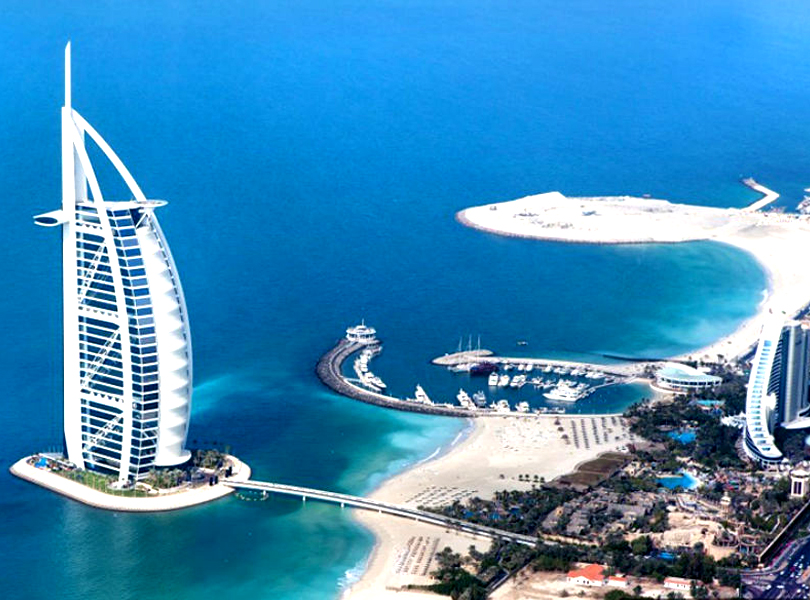
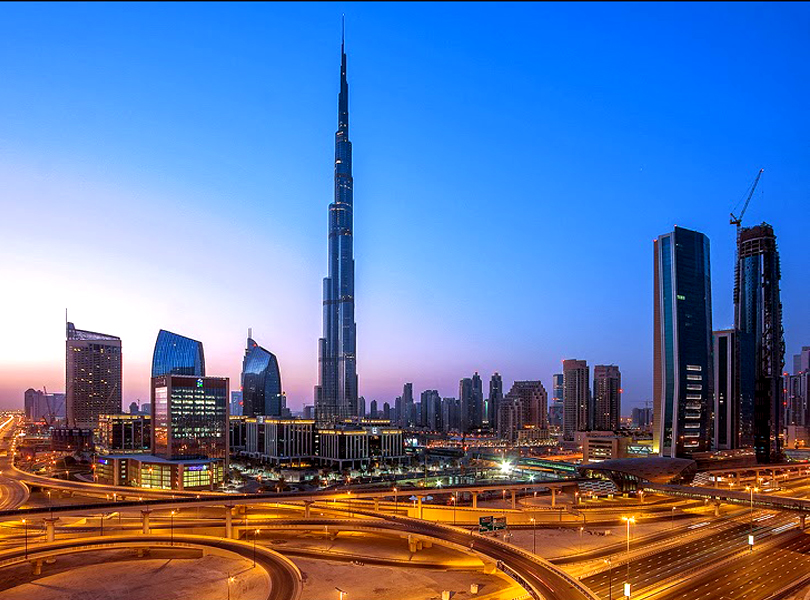
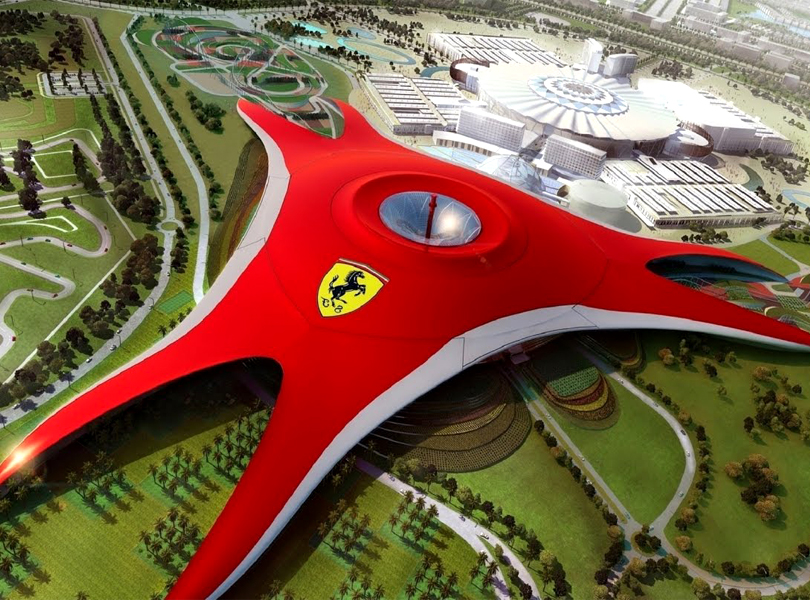

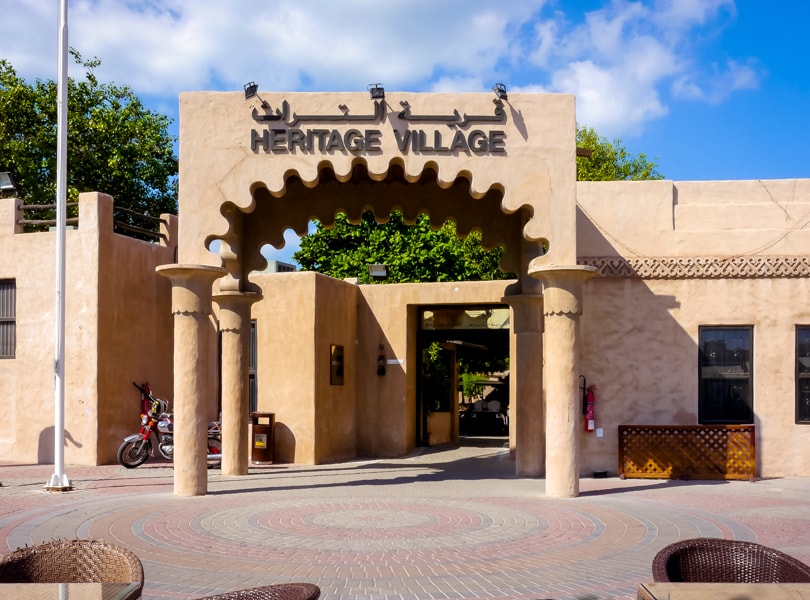
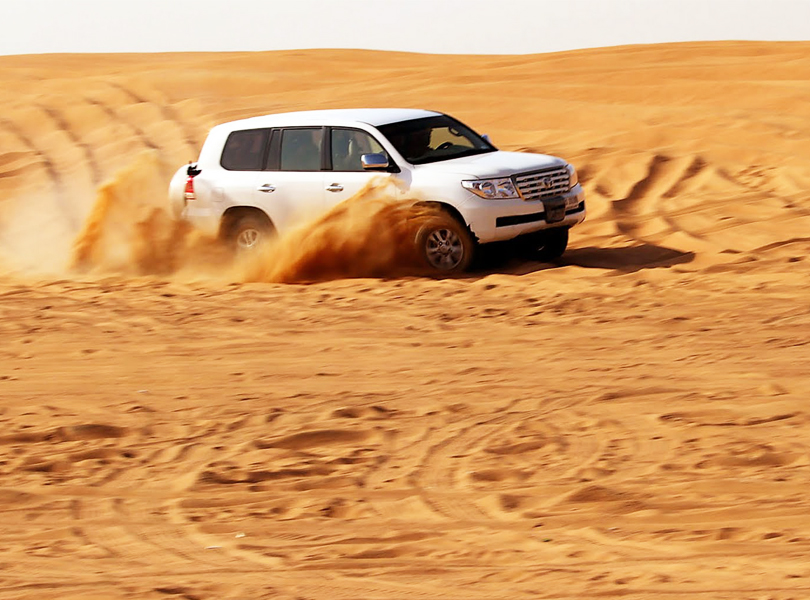
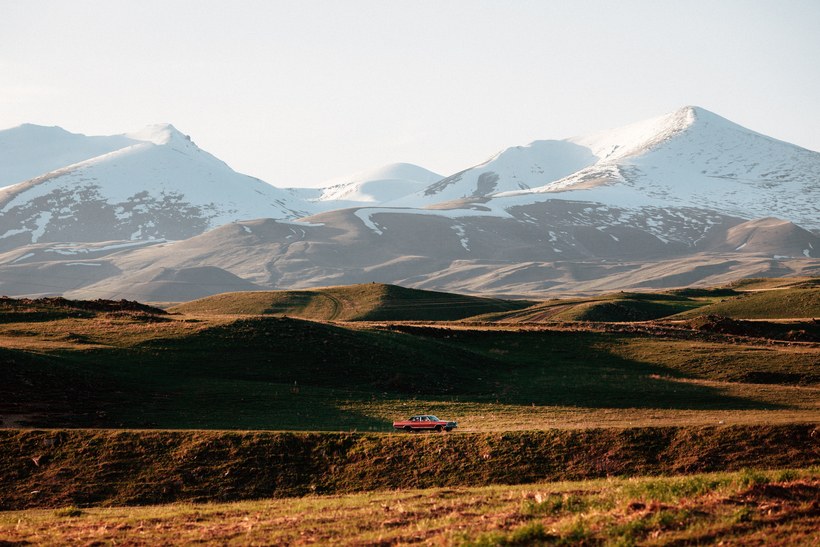
Payment Policy
Cancellation Policy
Refund Policy